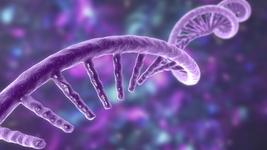CMN Weekly (1 December 2023) - Your Weekly CRISPR Medicine News
By: Karen O'Hanlon Cohrt - Dec. 1, 2023
Top picks
- A team of researchers in the US has developed the fast locality-sensitive hashing-based clustering (FLSHclust) algorithm, which performs deep clustering on massive datasets in linearithmic time. Recognising the difficulties in finding previously unidentified CRISPR systems in the face of exponentially growing sequence databases, the team incorporated FLSHclust into a CRISPR discovery pipeline and identified 188 previously unreported CRISPR-linked gene modules, revealing many additional biochemical functions coupled to adaptive immunity. They experimentally characterised three HNH nuclease-containing CRISPR systems, including the first type IV system with a specified interference mechanism, and engineered them for genome editing. They also identified and characterised a candidate type VII system, which they demonstrate to act on RNA. The findings were published in Science earlier this week.
Research
- A study undertaken at multiple research institutes in the US has uncovered that a short, fully stabilised oligonucleotide (a so-called 'protecting oligo'), which can be displaced by tracrRNA annealing, can significantly enhance the potency and stability of a heavily modified crRNA. The team also show that protecting oligos allow various bioconjugates to be appended, thereby improving cellular uptake and biodistribution of crRNA in vivo. Using the new approach, in vivo genome editing was acheieved in adult mouse liver and central nervous system via co-delivery of unformulated, chemically-modified crRNAs with protecting oligos and adeno-associated virus (AAV) vectors that express tracrRNA and either SpyCas9 or a base editor derivative. These findings offer a route towards transient editing activity, target multiplexing, guide redosing, and vector inactivation. The findings were published yesterday in Nucleic Acids Research.
- In an article published today in Experimental and Molecular Medicine, researchers in Korea describe a new approach to base editing that does not leave unintended indels in human cells and mouse primary myoblasts. By using catalytically-dead Cas9 (dCas9) instead of the conventionally-used nickase Cas9 in the base editors, the team could induce accurate substitutions without indels, and they furthermore found that using both dCas9 and chromatin-modulating peptides in base editing improved the nucleotide substitution efficiency without unintended indel mutations at the desired target sites in human cell lines and mouse primary myoblasts. Read the full findings here.
- In an article published yesterday in Nature Protocols, researchers in China share what they deem to be an easy, efficient and generalisable strategy for engineering photoswitchable RNA-binding proteins (RBPs) for the spatiotemporal control of RNA metabolism. They also provide a protocol for the conversion of a CRISPR-Cas system to optogenetic control. The new protocols build upon earlier work from the same team, which recently reported the development of LicV, a synthetic photoswitchable RBP that can bind to a specific RNA sequence in response to blue light irradiation.
- Researchers in China report using CRISPR-Cas9 to enhance the expression of coagulation factor FVIII in vitro. Factor VIII deficiency, which arises through mutations in the F8 gene, leads to haemophilia A. The researchers identified high-activity variants of FVIII which were used to construct donor plasmids that were co-transfected with sgRNA-Cas9 protein into the murine neuroblast cell line, Neuro-2a. Among their findings, they demonstrate targeted knock-in of a high-activity FVIII variant at the mROSA26 locus, via both HDR/NHEJ gene repair approaches, as well high level and stable FVIII expression. Their findings were published earlier this week in Gene.
- An arrayed CRISPR knockout screen in the Caco-2 model cell line has identified potential novel genetic regulators of the GLUT1 gene, which encodes the glucose transporter 1 protein. Dysregulation of GLUT1 expression and function has implications in a range of diseases such as Alzheimer's disease and several cancers. The new screen identified more than 300 genes whose removal led to GLUT1 downregulation, some of which were validated in secondary hit validation experiments. The findings, which were published earlier this week in Science Reports, may lead to novel insights about the role of GLUT1 in health and disease.
Detection
- Researchers in Switzerland report the crystal structures of a type III CRISPR ancillary nuclease Can2 from Thermoanaerobacter brockii (TbrCan2) in substrate- and product-bound complexes. They show that TbrCan2 is a single strand-selective DNase and RNase that binds substrates via a conserved SxTTS active site motif, and reveal molecular interactions underpinning its sequence preference for CA dinucleotides. The team also identify a molecular interaction relay linking the cA4 binding site and the nuclease catalytic site to enable divalent metal cation coordination and catalytic activation. They propose that their findings, published yesterday in Nucleic Acids Research, provide key insights into the molecular mechanisms of Can2 nucleases in type III CRISPR-Cas immunity and may guide their technological development for nucleic acid detection applications.
- In an article published yesterday in Nucleic Acids Research, a team in the US reports an expansive characterisation of Cas13a from Leptotrichia buccalis (LbuCas13a) RNA-detection specificity by performing a combination of experimental RNA mismatch tolerance profiling, molecular dynamics simulations, protein, and crRNA engineering. The found that certain positions in the crRNA-target-RNA duplex are particularly sensitive to mismatches and established the effect of RNA concentration in mismatch tolerance. Furthermore, they determined that shortening the crRNA spacer or modifying the direct repeat of the crRNA leads to stricter specificities. Read the full findings here.
- Researchers in the US have uncovered functional hotspots in CRISPR-Cas13a by applying multiple-microsecond molecular dynamics simulations in combination with graph theory. Cas13a exclusively targets RNA, which has made it a popular tool within the development of RNA-detection strategies, and these new findings improve our understanding of its mechanism of action and should provide new avenues for the development of highly-selective RNA-based cleavage and detection tools. The findings were published yesterday in Nucleic Acids Research.
Industry
- Precision BioSciences announced yesterday that it will present in an industry session at the Hep-DART 2023 conference, and host a poster presentation on December 5, 2023, in Los Cabos, Mexico. The presentation will focus on the company's PBGENE-HBV programme, which is a potentially curative strategy to eliminate cccDNA and inactivate integrated HBV DNA through gene editing, while the poster will reveal pre-clinical efficacy and safety data concerning the use of ARCUS-POL nucleases as a potential cure for chronic hepatitis B infection. See the company's press release for further details.
- Vor Bio announced earlier this week that it will participate in a fireside chat and host virtual 1x1 investor meetings at the JMP Securities Hematology and Oncology Summit, a virtual event to be held on December 5, 2023. See here for further details.
- KSQ Therapeutics in collaboration with The University of Texas MD Anderson Cancer Center and the Cell Therapy Manufacturing Center (CTMC), announced in a press releaase published this week that the US FDA has cleared an Investigational New Drug (IND) application for a Phase 1/2 clinical study of KSQ-001EX, KSQ’s lead engineered tumour-infiltrating lymphocyte (eTIL®) programme. KSQ-001EX consists of TILs in which the SOCS1 gene is inactivated by CRISPR-Cas9 gene editing. KSQ’s CRISPRomics® platform identified SOCS1 as a key gene regulating the anti-tumour potency and persistence of TIL and provides KSQ-001EX with best-in-class potential in the treatment of solid tumours.
- UK-headquarted cell and gene therapy Contract Development and Manufacturing Organisation RoslinCT, dedicated to developing therapies for patients with serious and life-threatening diseases, announced this week that it will manufacture the world’s first CRISPR-based therapy, exa-cel (marketed as CasgevyTM), across the world as part of the global manufacturing network for Vertex Pharmaceuticals. Casgevy was authorised by the UK Medicines and Healthcare products Regulatory Agency (MHRA) on November 15 for the treatment of sickle cell disease and transfusion-dependent beta thalassemia.
Reviews
- Understanding Genetic Heterogeneity in Gene-Edited HSC Products. The authors of this review provide an overview of the different sources of 'undesired' edits that can occur following gene editing in haematopoietic stem cells, and discusses strategies for their mitigation and control.
Webinars and other events
- Don't miss our free upcoming CMN webinar about CRISPR screens. Our invited speakers from Vivlion and Repare Therapeutics will introduce you to a CRISPR-enabled discovery platform and explain how CRISPR-based genetic screens enable the discovery of oncology drug targets, predictive biomarkers, and mechanisms of resistance. See here for more information and sign-up details.
- CRISPR - New Technologies for Research and Medicine. This is a virtual Professional Development Café event that is free for American Society of Gene & Cell Therapy (ASGCT) members. The invited speaker is Julian Grünewald, MD, PhD, and the event will be moderated by Ben Kleinstiver, PhD. Date and time: December 15, 2023 from 1-2 pm CT. See further details and register here.
WeDoCRISPR!
- If you're interested in learning the basics about gene editing, then check out the Making the Cut series, which is written and curated by our colleagues at WeDoCRISPR. In their latest instalment, they discuss the existing strategies to reduce and limit off-target effects when using CRISPR-Cas9 editing. Follow WeDoCRISPR here for all their future updates!
Huh, heh, wow
- A news article in Nature describes how scientists in Germany and Japan have independently used CRISPR gene editing in cuttlefish embryos to study their complex skin patterns and brain activity despite challenges in adapting the technology for these organisms. The original papers were published back-to-back this summer in Nature (here and here) and include high-resolution imaging of skin cells and e-ink technology for environmental simulation. They aim to unravel the mechanisms behind cuttlefish's rapid, colour-blind camouflage and explore broader biological phenomena like sleep evolution and interspecies communication.
To get more of the CRISPR Medicine News delivered to your inbox, sign up to the free weekly CMN Newsletter here.
Tags
ArticleMissing linksNewsCMN WeeklyCRISPR Therapeutics AGKSQ TherapeuticsPrecision BioSciences, Inc.Repare TherapeuticsVertex Pharmaceuticals, Inc.VivlionVor Biopharma
CLINICAL TRIALS
IND Enabling
Phase I
Phase II
Phase III
IND Enabling
Phase I
Phase II
Phase III
Amyotrophic Lateral Sclerosis, ALS, or Frontotemporal Dementia FTD, (NCT04931862)
Sponsors:
Wave Life Sciences Ltd.
Sponsors:
Wave Life Sciences Ltd.
IND Enabling
Phase I
Phase II
Phase III







